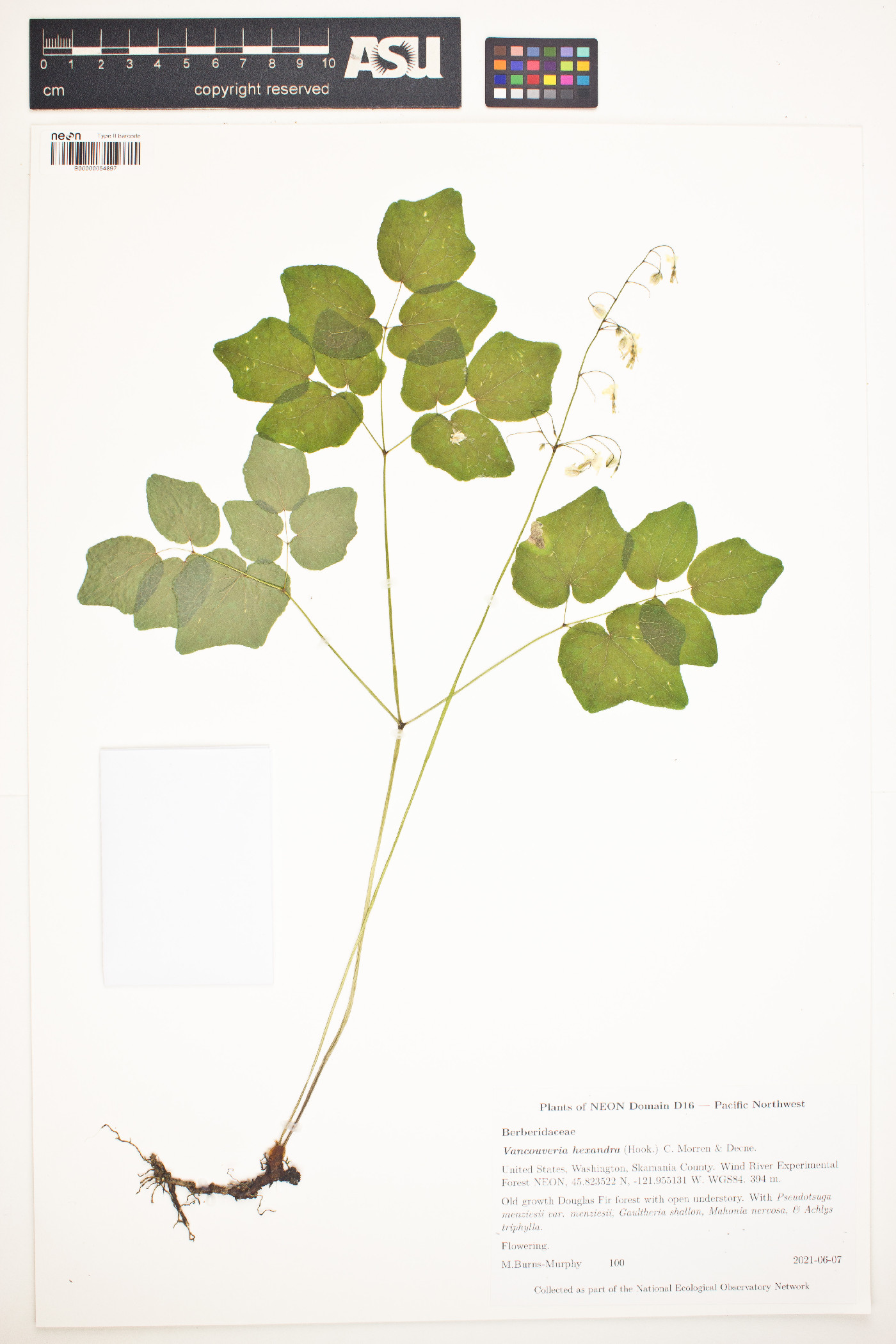|
Vancouveria hexandra
 Explore 2 NEON Biorepository occurrences (redirected from: Vancouveria brevicula Greene) |
|
|
Family: Berberidaceae
white insideout flower
[Vancouveria brevicula Greene, more] |
|


